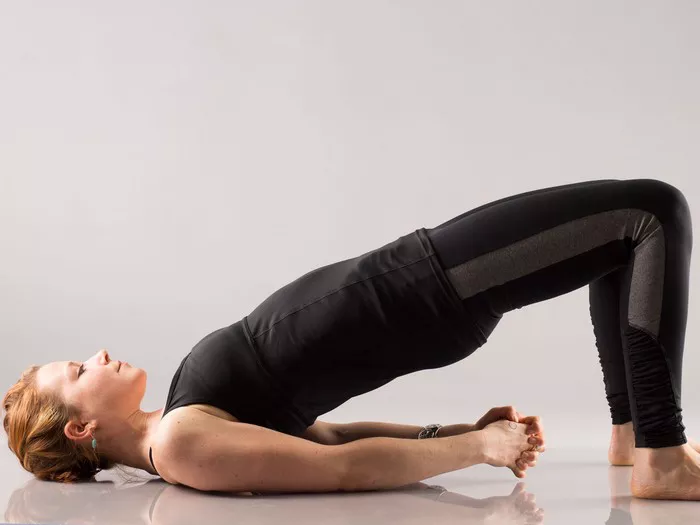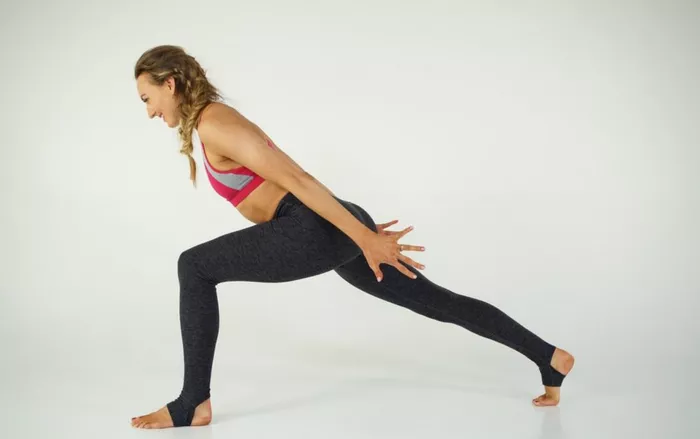In the vast and varied landscape of yoga, there exists a multitude of postures that cater to every individual, regardless of their experience level or physical capabilities. Supine yoga poses, where the practitioner lies on their back, are particularly accessible and beneficial for practitioners of all levels. These poses not only offer relaxation and rejuvenation but also provide an opportunity to deepen one’s practice and cultivate mindfulness. In this article, we’ll explore nine supine yoga poses that are suitable for all practice levels, from beginners to seasoned yogis.
1. Savasana (Corpse Pose):
Savasana, also known as Corpse Pose, is perhaps the most well-known and beloved of all yoga poses. Despite its apparent simplicity, Savasana is a deeply restorative posture that allows practitioners to relax both the body and the mind completely. To practice Savasana, simply lie on your back with your arms and legs comfortably spread apart, palms facing up. Close your eyes and focus on your breath, allowing yourself to let go of tension with each exhale. Stay in this pose for at least five minutes, or longer if desired, to experience its full benefits.
2. Supta Baddha Konasana (Reclining Bound Angle Pose):
Supta Baddha Konasana, also known as Reclining Bound Angle Pose, is a gentle hip opener that promotes relaxation and flexibility. To practice this pose, lie on your back and bring the soles of your feet together, allowing your knees to fall open to the sides. You can place blocks or folded blankets under your knees for support if needed. Relax your arms by your sides or place one hand on your heart and the other on your belly. Close your eyes and breathe deeply, allowing the hips to release tension with each exhale. Hold the pose for 1-3 minutes, gradually increasing the duration as you become more comfortable.
3. Supta Matsyendrasana (Reclining Spinal Twist):
Supta Matsyendrasana, or Reclining Spinal Twist, is a gentle twist that helps to release tension in the spine and improve spinal mobility. To practice this pose, lie on your back with your arms extended out to the sides in a T position. Bend your right knee and cross it over your body, placing your right foot on the ground next to your left thigh. Use your left hand to gently guide your right knee towards the ground, keeping both shoulders rooted on the mat. Turn your head to the right and gaze towards your outstretched arm. Hold the pose for 1-3 minutes, then repeat on the other side.
4. Supta Padangusthasana (Reclining Hand-to-Big-Toe Pose):
Supta Padangusthasana is a rejuvenating stretch for the hamstrings and calves, as well as a gentle opener for the hips and groin. To practice this pose, lie on your back with both legs extended. Bend your right knee and hug it towards your chest. Loop a yoga strap or towel around the ball of your right foot and extend your right leg towards the ceiling. Keep both hips grounded on the mat as you straighten your leg, flexing the foot towards your face. Hold the pose for 1-3 minutes, then switch sides.
5. Setu Bandhasana (Bridge Pose):
Setu Bandhasana, or Bridge Pose, is an energizing backbend that strengthens the back, glutes, and hamstrings while also opening the chest and shoulders. To practice Bridge Pose, lie on your back with your knees bent and feet hip-width apart. Press into your feet as you lift your hips towards the ceiling, engaging your glutes and thighs. You can interlace your fingers under your back and shimmy your shoulders closer together for a deeper stretch. Keep your neck long and gaze towards your knees. Hold the pose for 30 seconds to 1 minute, then release back down to the mat.
6. Viparita Karani (Legs-Up-the-Wall Pose):
Viparita Karani, or Legs-Up-the-Wall Pose, is a deeply relaxing inversion that helps to reduce swelling in the legs, improve circulation, and calm the nervous system. To practice this pose, sit sideways with one hip against a wall. Swing your legs up the wall as you lower your upper body to the ground, forming an L shape with your body. You can place a folded blanket or bolster under your hips for support if needed. Relax your arms by your sides or place them on your belly or chest. Close your eyes and focus on your breath, staying in the pose for 5-15 minutes.
7. Supta Virasana (Reclining Hero Pose):
Supta Virasana, or Reclining Hero Pose, is a deep stretch for the quadriceps, knees, and ankles, while also opening the chest and shoulders. To practice this pose, begin by kneeling on the mat with your knees together and feet slightly wider than hip-width apart. Sit back on your heels and then slowly lower your back to the ground, using your hands for support. You can place a block or bolster under your spine for added support if needed. Allow your arms to relax by your sides with palms facing up. Hold the pose for 1-3 minutes, breathing deeply into any areas of tension.
8. Supta Virasana Variation (Reclining Hero Pose Variation):
This variation of Supta Virasana provides a deeper stretch for the shoulders and chest while also targeting the hip flexors and thighs. To practice this variation, begin in Supta Virasana with your back resting on the mat and your arms extended out to the sides in a T position. Bend your elbows and bring your palms together in prayer position overhead. Allow your elbows to gently drop towards the ground as you deepen the stretch in your shoulders and chest. Hold the pose for 1-3 minutes, then release and repeat on the other side.
9. Supta Sukhasana (Reclining Easy Pose):
Supta Sukhasana, or Reclining Easy Pose, is a comfortable and grounding posture that promotes relaxation and inner peace. To practice this pose, begin by sitting cross-legged on the mat. Lean back slowly and lower your back to the ground, using your hands for support. You can place a bolster or folded blanket under your spine for added support if needed. Allow your arms to relax by your sides with palms facing up. Close your eyes and focus on your breath, letting go of any tension with each exhale. Hold the pose for 1-3 minutes, or longer if desired.
Conclusion
Incorporating these supine yoga poses into your practice can help you cultivate a deeper sense of relaxation, flexibility, and overall well-being. Whether you’re a beginner or an experienced yogi, taking the time to explore these poses will not only enhance your physical health but also nourish your mind and spirit. Remember to listen to your body and modify the poses as needed to suit your individual needs and abilities. With dedication and practice, you’ll discover the transformative power of supine yoga poses in your life.






















